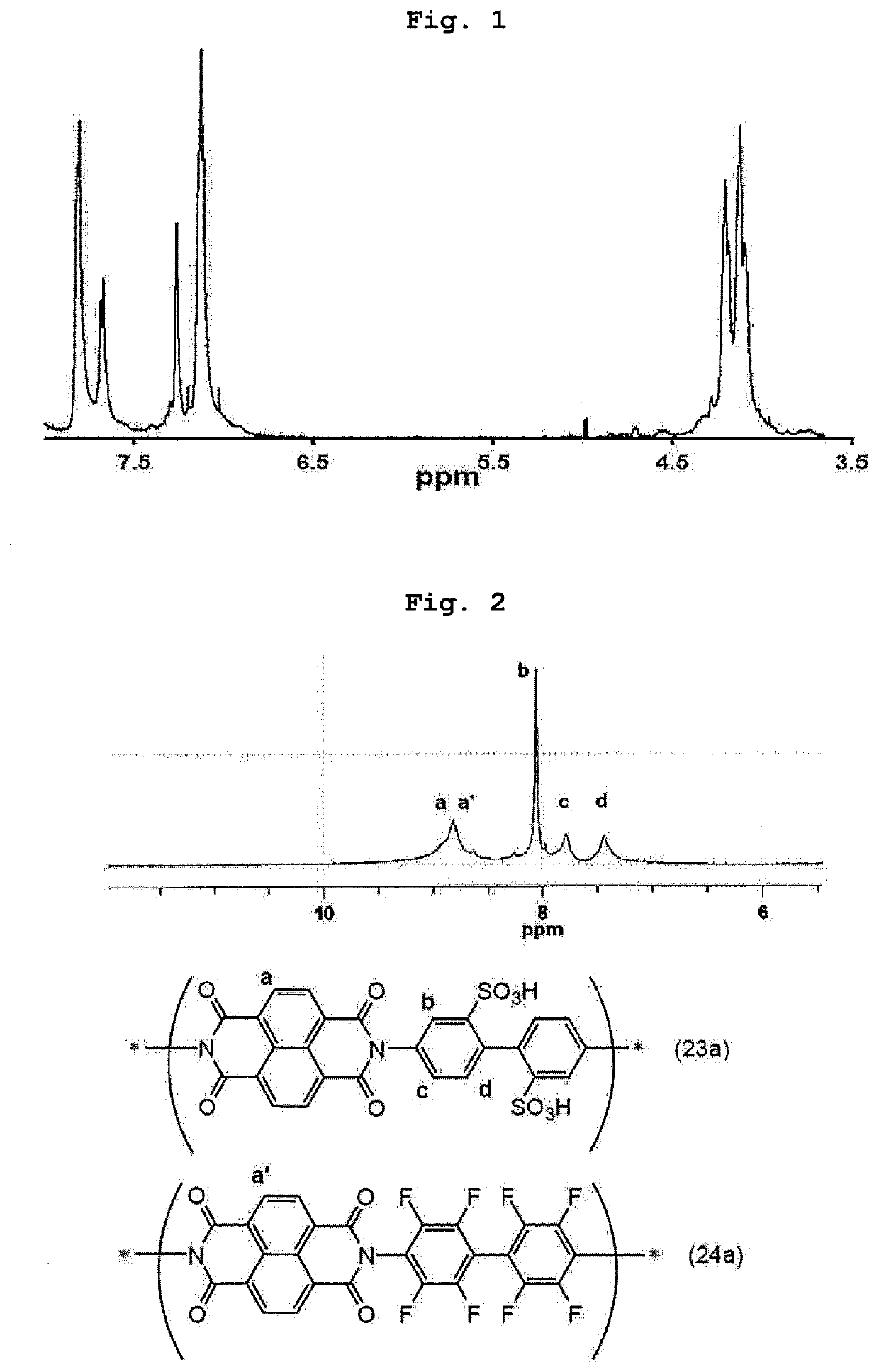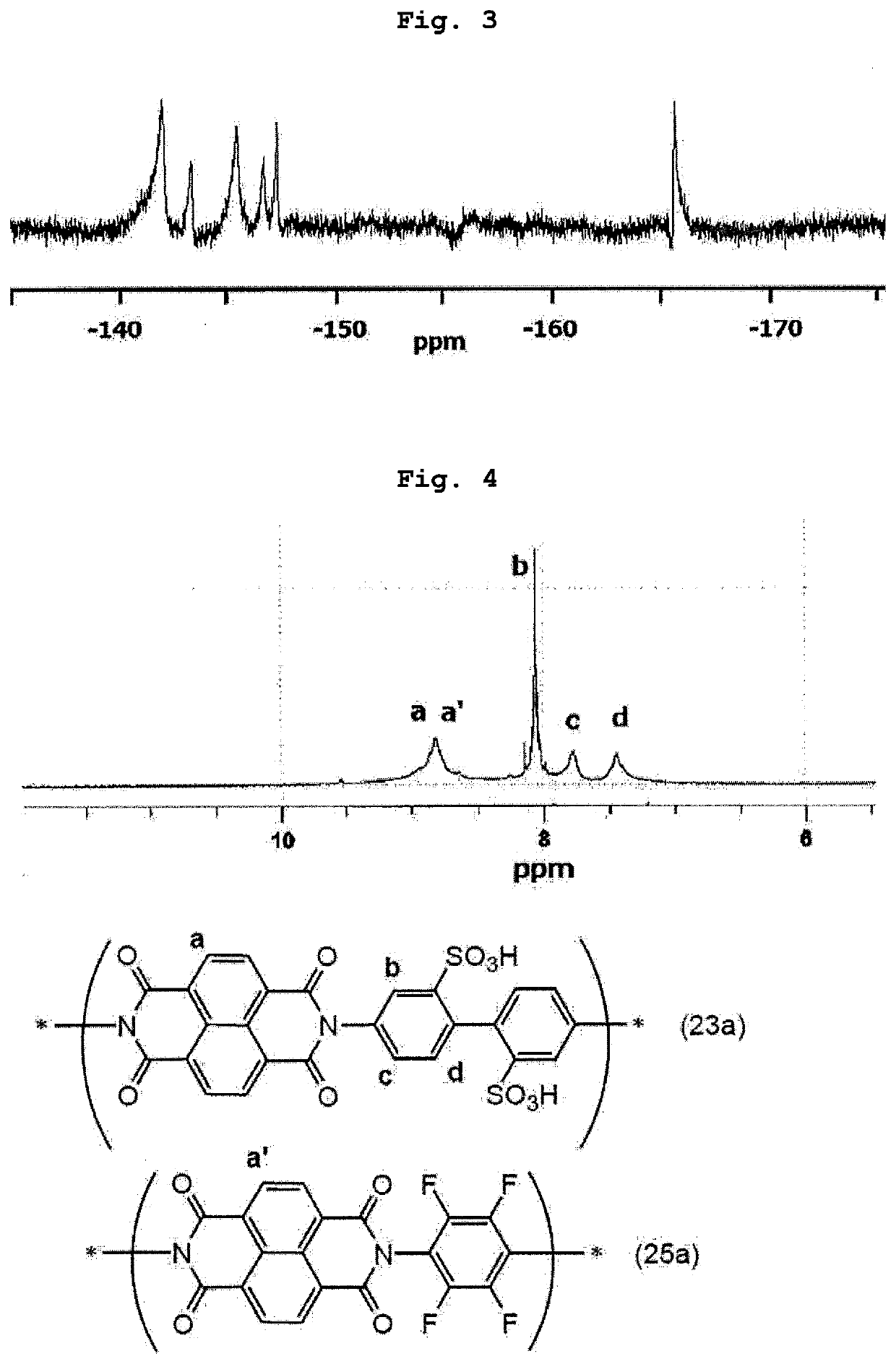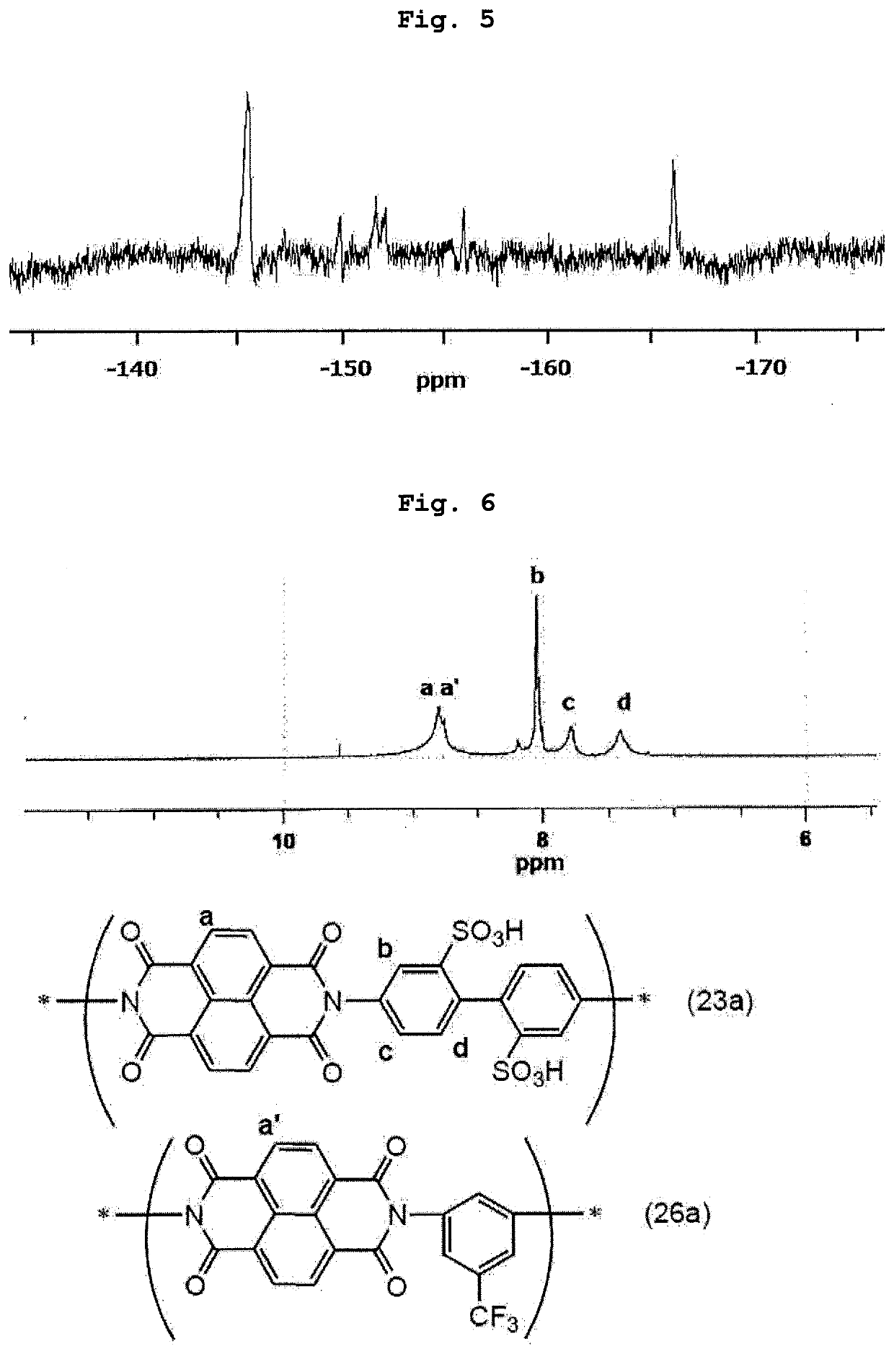Polymer composition
a technology of polymer composition and composition, which is applied in the direction of fuel cells, electrochemical generators, cell components, etc., can solve the problems of low-molecular weight compound leakage, stability problems, and material leakage, and achieve the effect of suppressing phase separation of polymer and improving strength
- Summary
- Abstract
- Description
- Claims
- Application Information
AI Technical Summary
Benefits of technology
Problems solved by technology
Method used
Image
Examples
example 1
n of Membrane of Composition (I) of Electron-Donating Polymer (D2-1) and Electron-Withdrawing Polymer (A2-1)
[0368]To a solution (408.9 mg, polymer concentration: 10 wt %) prepared by dissolving the electron-donating polymer (D2-1) in dimethyl sulfoxide was added a solution (3.26 g, polymer concentration: 3.3 wt %) prepared by dissolving the electron-withdrawing polymer (A2-1) in dimethyl sulfoxide. The solution was stirred and filtered through a 5 μm syringe filter made of polytetrafluoroethylene (PTFE) and the obtained filtrate was added to a petri dish with diameter 4 cm, the petri dish was placed on a hot plate set to 120° C., and dimethyl sulfoxide was evaporated. Then, the petri dish was placed on a vacuum dryer, and dried under reduced pressure at 80° C. for 10 hr to give a membrane of composition (I) of the electron-donating polymer (D2-1) and the electron-withdrawing polymer (A2-1) (brown transparent, membrane thickness: 44 μm).
example 2
n of Membrane of Composition (II) of Electron-Donating Polymer (D2-1) and Electron-Withdrawing Polymer (A2-1)
[0369]In the same manner as in Example 1 except that the ratio of a solution of the electron-donating polymer (D2-1) in dimethyl sulfoxide (polymer concentration: 10 wt %) and a solution of the electron-withdrawing polymer (A2-1) in dimethyl sulfoxide (polymer concentration: 3.3 wt %) was changed, membrane of composition (II) was produced.
[0370]Table 1 shows the amounts of the electron-donating polymer (D2-1) and the electron-withdrawing polymer (A2-1) in the membranes of the compositions (I) and (II) obtained in Examples 1 and 2, as well as the membrane thickness thereof. In Tables in the present specification and drawings, “electron-donating polymer (D2-1)” and the like are abbreviated as “(D2-1)” and the like.
[0371]Table 1 also shows molar ratio of naphthalene tetracarboxylic acid diimide part (a) of the electron-withdrawing polymer (A2-1) and dioxynaphthalene part (d) of ...
reference example 1
ane of Electron-Withdrawing Polymer (A2-1) Alone
[0373]A solution prepared by dissolving the electron-withdrawing polymer (A2-1) (150 mg) in dimethyl sulfoxide (5 g) was filtered using a cotton plug, the obtained filtrate was added to a petri dish with diameter 4 cm, the petri dish was placed on a hot plate set to 60° C., and dimethyl sulfoxide was evaporated. Then, the petri dish was placed on a vacuum dryer, and dried under reduced pressure at 80° C. for 24 hr to give a membrane of the electron-withdrawing polymer (A2-1) (light brown transparent, membrane thickness 24 μm).
PUM
| Property | Measurement | Unit |
|---|---|---|
| composition | aaaaa | aaaaa |
| structure | aaaaa | aaaaa |
| charge-transfer | aaaaa | aaaaa |
Abstract
Description
Claims
Application Information
 Login to View More
Login to View More - R&D
- Intellectual Property
- Life Sciences
- Materials
- Tech Scout
- Unparalleled Data Quality
- Higher Quality Content
- 60% Fewer Hallucinations
Browse by: Latest US Patents, China's latest patents, Technical Efficacy Thesaurus, Application Domain, Technology Topic, Popular Technical Reports.
© 2025 PatSnap. All rights reserved.Legal|Privacy policy|Modern Slavery Act Transparency Statement|Sitemap|About US| Contact US: help@patsnap.com



